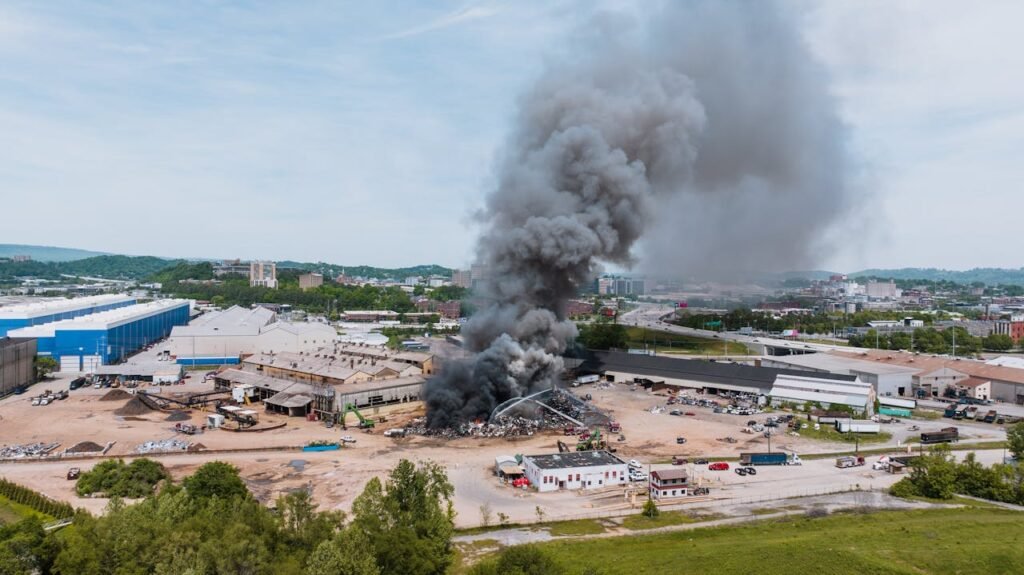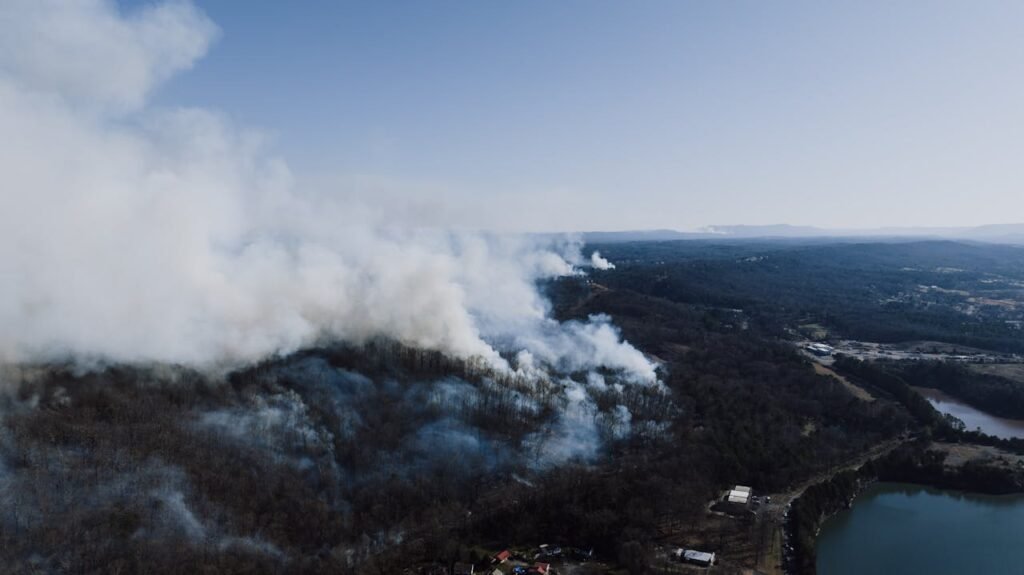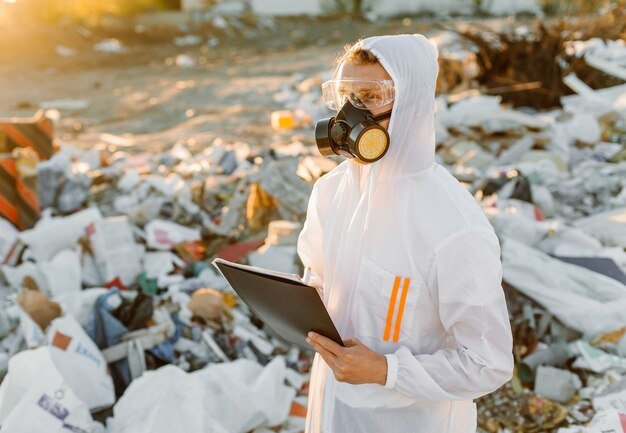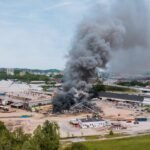Dirty Air Makes Industrial Work More Dangerous and More Costly
Dirty air is not just a public-health problem; it is a workplace problem that raises costs, cuts output, and makes industrial work more dangerous. According to the World Health Organization, exposure to outdoor fine particulate matter caused millions of premature deaths and large burdens of disease; the WHO’s 2019 estimates showed millions of premature deaths tied to ambient air pollution and new guidance continues to point to harm at levels well below many national limits.
The International Labour Organization has put the issue squarely in the world of work: A recent ILO assessment highlights that air pollution—both outdoor and workplace exposures—accounts for hundreds of thousands of work-related deaths and large losses of healthy working years each year, especially for outdoor and manual workers. A report by the ILO in 2024 emphasised that protecting workers from dirty air is now a core occupational-health challenge that interacts with heat, extreme weather and growing wildfires.
When factories, sites and roadways fill with smoke, dust or chemical haze, the immediate impacts are visible—coughing, fatigue, eye irritation—but the downstream effects hit balance sheets too. Workers whose breathing and concentration suffer are likelier to make mistakes, slow production and file injury claims. Employers face higher absenteeism, rising compensation claims, regulatory shutdowns and lost orders when visibility, air quality and worker health all fall at once. These are not abstract risks: recent studies and real-world policy moves show the consequences in numbers and in pay packets.

Lives on the Frontline
In New Delhi, construction workers face a yearly winter dilemma: when authorities enforce anti-smog measures, millions of workdays are lost; when work continues through hazardous smog, many risk a season of illness. “If I’m going to get sick from air pollution and die, then I would prefer to die while working as I have mouths to feed,” Totaram Maurya told Reuters during a construction ban in 2023, a blunt reflection of poverty and limited social protection.
Across India’s Delhi-NCR region, multiple local reports documented repeated stoppages under the Graded Response Action Plan (GRAP), leaving thousands of daily-wage labourers without pay for weeks. Raju Singh, who moves between short-term construction jobs each winter, told The New Indian Express that bans and shutdowns leave families scrambling for food and force many to accept dangerous, informal work rather than stay home. These local accounts highlight a painful reality: pollution controls protect health, but if controls are sudden and unsupported, they transfer economic harm to the poorest workers.
There are also stories from wildfire zones where smoke drifts far from the fire line. In the United States, companies and emergency services reported spikes in short-term respiratory illness, while claims data show measurable rises in workplace injuries in days with heavy smoke. Employers and insurers in wildfire-affected regions are discovering that smoke is not just an occasional nuisance, but a recurring cost.
What the Research and Numbers Show
A growing and consistent body of research now links dirty air directly to workplace safety and costs. In a broad US study that matches plume data and workers’ compensation claims, researchers found that days with wildfire smoke raise injury claims by roughly 2.8%—measurable and economically meaningful at scale. The authors note this effect appears across industries and injury types, indicating a general risk to worker safety during smoky days. According to the study, smoke days meaningfully increase injury claims.
Across different settings, natural dust events and high particulate days have been shown to increase accident rates. A cross-country analysis using Spain’s national accident records found that days with dust precipitation raise workplace accident rates by around 1.4%—effects similar in size to well-known occupational risks like high temperatures. According to the analysis, dust events carry a measurable accident risk.
Construction is one of the sectors most frequently studied. A 2023 analysis linking PM10 concentrations with construction-site injuries found that higher particulate levels were associated with increased accident probabilities on sites — a plausible outcome given impaired vision, breathing discomfort, and reduced manual dexterity when dust and haze are high. The study suggests that particulate pollution is linked to a higher risk of construction accidents.
Those percentage-point rises might sound small until you scale them up. A 2–3% increase in injury claims on a workforce of millions, or a 1–2% increase in accident probability on hundreds of busy construction sites, translates into thousands of extra injuries, lost wages, compensation costs, and productivity hits over a season. The WHO and ILO joint work also quantifies very large population-level burdens of disease attributable to workplace-related air exposures—again underlining that the problem is both medical and economic. A WHO/ILO joint estimate in 2021 found workplace air pollution among the major occupational risk factors accounting for hundreds of thousands of deaths.
These studies share a common finding: air pollution reduces workers’ physical resilience and cognitive performance, harms the cardiorespiratory system, reduces visibility, and increases the likelihood of slips, trips, and mistakes. The economic consequences appear as higher injury claims, more sick leave, and, when regulators intervene, production pauses that hit small contractors and daily-wage workers the hardest.

Fixes that Save Money and Lives
The good news is that many fixes both reduce health harm and lower business risk. Governments, large firms and small employers can act at different scales—some measures are inexpensive and immediate, others require planning and investment but pay off over time.
First, employers can adopt operational responses tied to air-quality data. On high-pollution days, moving vulnerable tasks indoors, cutting strenuous outdoor work, shortening shifts and rotating crews reduces acute exposure and accident risk. Employers in wildfire-prone parts of North America now use real-time smoke maps and threshold triggers to change operations; research shows these changes reduce injuries and claims.
Second, workplace controls matter. For indoor and enclosed industrial spaces, improving ventilation with HEPA filtration, installing localised dust extraction, and creating clean-air rest areas are practical steps that reduce exposure. For outdoor industries, the focus is different: dust suppression, water spraying on roads and stockpiles, wind barriers, and using enclosed cabs with filtered air for heavy equipment reduce the concentration of particles reaching workers’ breathing zones. WHO guidance and ILO toolkits for workplace air quality provide practical templates for employers and occupational-health services. A WHO report in 2021 and subsequent guidance lay out air-quality thresholds and mitigation options employers can use.
Third, policy design should protect the poorest workers when restrictions are needed. The Delhi experience shows the harms of blunt shutdowns: bans that stop construction reduce pollution exposure in cities, but can leave undocumented and informal workers without income. A policy that pairs temporary work restrictions with cash transfers, paid sick leave, or targeted wage support prevents the worst trade-offs between health and hunger. Analyses of Delhi’s GRAP measures and coverage gaps show that a year-round approach to pollution control—rather than episodic bans—plus worker support mechanisms is more equitable and effective.
Fourth, prevention at the source is the long game. Cleaner fuels, dust-free construction practices, stricter vehicle emission standards, better waste management to prevent open burning, and landscape-level fire management all help reduce the frequency and severity of dangerous pollution episodes. The WHO and other agencies argue that investments in cleaner energy and stronger pollution controls are investments in a healthier, more productive workforce. Dr María Neira of the WHO put it plainly: “Clean air is not a privilege; it is a human right.” That framing helps shift policy from short-term fixes toward lasting prevention.
Practical, immediate advice for employers and site managers (short, easy actions you can start today): monitor local air-quality indices and set simple triggers to change work practice when PM2.5 or AQI crosses thresholds; provide N95/FFP2 respiratory protection when filtration isn’t possible and ensure proper fit; rotate crews and shorten outdoor shifts on bad-air days; invest in portable HEPA filtration units for indoor common areas and tool rooms; and document exposures and incidents so that patterns can be identified and addressed. These actions cut exposure fast and reduce the accident risk that pollutes profits as surely as lungs.
Finally, long-term resilience requires combining occupational health with social protection. When regulators schedule temporary closures to protect public health, governments should provide rapid support for those who lose income. Firms should incorporate the cost of protective measures into procurement and contract terms, rather than treating them as discretionary extras. Research clearly shows that reducing dirty air lowers injuries, claims, and lost production — protecting both human lives and livelihoods.
Conclusion
Dirty air makes industrial work more dangerous and more costly, not because a single report says so, but because dozens of studies, on-the-ground worker testimonies, and global health agencies all point to the same conclusion. The remedy is a mix of sensible workplace rules, low-cost controls, stronger social safety nets, and the longer-term investments that stop the smoke and dust at their source. For employers, policymakers and communities, treating clean air as both an occupational-safety priority and a public-health goal brings a rare win-win: fewer injuries, fewer sick days, and steadier livelihoods for the people who keep industry running.







